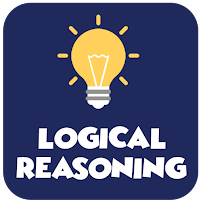Mastering Time: Productivity Hacks for Students and Young Professionals
“Time is what we want most, but what we use worst.” — William Penn
In the fast-paced world of studies, internships, and early career challenges, mastering time management is a crucial skill that can set you apart. The good news? With the right strategies, you can take control of your time, avoid procrastination, and maintain a healthy balance between work and life. Let’s explore actionable hacks, real-life stories, and techniques to help you stay productive and focused.
1. The Power of Prioritization: The Eisenhower Matrix
One of the best ways to manage your tasks is to categorize them into four quadrants:
- Urgent and Important: Do these tasks immediately.
- Important but Not Urgent: Schedule these for later.
- Urgent but Not Important: Delegate or minimize.
- Neither Urgent nor Important: Eliminate these.
2. Break Big Tasks into Smaller Ones: The 2-Minute Rule
Often, we procrastinate because a task feels too big or overwhelming. The 2-minute rule suggests starting with a task that takes just two minutes to complete.
3. Use Time-Blocking to Stay Focused
Allocate specific blocks of time for different tasks throughout your day. This technique ensures that you dedicate uninterrupted time to your priorities.
4. Beat Procrastination with the Pomodoro Technique
The Pomodoro Technique involves working for 25 minutes and then taking a 5-minute break. These short bursts of focus can make large tasks more manageable.
5. Learn to Say ‘No’
Overcommitting can derail your productivity. Be selective about the commitments you take on and focus on what aligns with your goals.
6. Maintain Work-Life Balance
Productivity isn’t just about doing more; it’s also about avoiding burnout. Make time for activities that recharge you, such as exercise, hobbies, and spending time with loved ones.
7. Use Technology to Your Advantage
Apps and tools can simplify time management and help you stay organized.
Examples of Useful Tools:
- Todoist or Microsoft To-Do: For task management.
- Forest App: To stay focused by gamifying productivity.
- Notion or Evernote: For organizing notes and projects.
8. Review and Reflect Regularly
Set aside time at the end of each day or week to review your progress. Celebrate small wins and identify areas for improvement.
Final Thoughts
Mastering time is less about doing everything and more about doing the right things effectively. By prioritizing, breaking tasks into manageable steps, and maintaining balance, you can make the most of every moment.
Remember, productivity isn’t just about achieving goals; it’s about enjoying the journey while staying true to your passions and values.
So, start today. Take charge of your time and watch how your focus, energy, and opportunities grow. You’ve got this!







